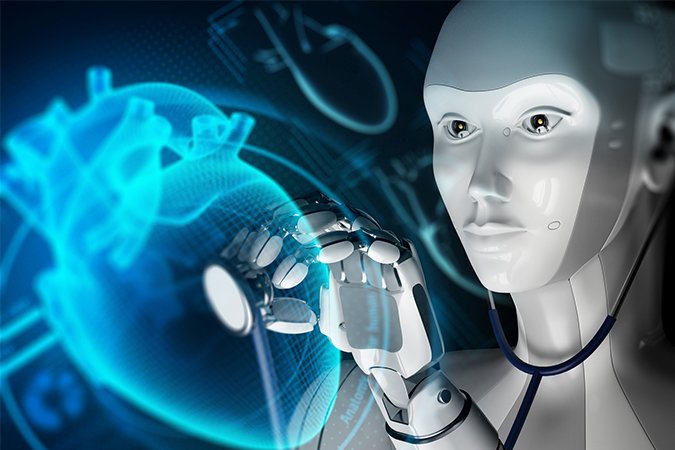Robotic Process Automation In Healthcare Industry
Embracing Automation for Improved Healthcare
In an era driven by Artificial Intelligence technological advancements, the healthcare industry is no exception to the wave of automation that has swept across various sectors. Robotic Process Automation (RPA) has emerged as a game-changer, revolutionizing the way healthcare organizations handle administrative tasks, streamline processes, and enhance patient care. In this comprehensive article, we delve deep into the world of Robotic Process Automation in the healthcare industry. Also exploring its applications, advantages, challenges, and its potential for the future.
The Role of Robotic Process Automation in the Healthcare Industry

Robotic Process Automation (RPA) refers to the use of software robots or artificial intelligence (AI) to automate repetitive and rule-based tasks. It allowing healthcare professionals to focus on more complex and critical responsibilities. Let’s dive into how RPA is transforming the healthcare landscape.
Automating Administrative Tasks
RPA is a powerful tool for automating administrative tasks in healthcare settings. By leveraging automation, healthcare organizations can streamline processes such as data entry, appointment scheduling, claims processing, and billing, significantly reducing the burden on staff and minimizing the risk of human error. The implementation of RPA in these areas enables a faster, more accurate, and cost-effective approach to administrative workflows.
Enhancing Patient Care
One of the primary goals of healthcare providers is to deliver high-quality patient care. With RPA, healthcare organizations can optimize workflows and free up valuable time for healthcare professionals to focus on patient-centric tasks. By automating routine tasks like updating patient records, generating reports, and managing inventory, RPA enables healthcare providers to allocate more time and resources to direct patient care. It can leading to improved outcomes and enhanced patient satisfaction.
Ensuring Compliance and Data Security
Compliance with regulations and the protection of sensitive patient data are critical concerns in the healthcare industry. RPA plays a vital role in ensuring compliance by automating data entry, record keeping, and reporting processes. It also reducing the risk of non-compliance errors. Moreover, RPA systems can enhance data security by providing secure access controls, encryption, and monitoring capabilities, safeguarding patient information from unauthorized access and breaches.
Robotic Process Automation in Healthcare
While the benefits of RPA in healthcare are evident, the implementation process comes with its own set of challenges and considerations. Let’s explore some key factors that healthcare organizations must take into account when adopting RPA.
Ensuring Seamless Integration
Integrating RPA into existing healthcare systems can be complex due to the presence of legacy systems and diverse software platforms. Healthcare organizations must carefully evaluate their infrastructure and develop a strategic plan to ensure seamless integration between RPA solutions and existing systems. This involves identifying compatibility issues, creating interfaces, and conducting thorough testing to minimize disruptions during the implementation phase.
Protecting Patient Information
As healthcare organizations increasingly rely on automation, data privacy and security become paramount. The sensitive nature of patient information demands robust security measures to protect against potential breaches. Healthcare organizations should prioritize data privacy and security when selecting RPA vendors. Also ensuring compliance with regulatory standards and implementing necessary safeguards to mitigate risks.
Staff Training and Change Management
Implementing RPA involves a shift in the roles and responsibilities of healthcare staff. To ensure a smooth transition, organizations must provide comprehensive training programs to familiarize employees with the RPA system. Training should cover the basics of automation, hands-on experience with RPA tools. Guidance on how to adapt to new workflows. Effective change management strategies, such as clear communication, stakeholder involvement, and addressing concerns, are crucial to gaining employee buy-in and maximizing the benefits of RPA adoption.
Navigating the Healthcare Landscape
The healthcare industry is subject to numerous regulations and compliance standards. When implementing RPA, healthcare organizations must navigate these complexities to ensure that automated processes adhere to regulatory requirements. It is essential to engage legal and compliance teams early in the implementation process to identify potential risks, align automation practices with regulatory guidelines, and establish monitoring and auditing mechanisms to maintain compliance.
Evaluating the Financial Impact (ROI) Analysis
While RPA offers numerous benefits, including increased efficiency and improved patient care, healthcare organizations must also consider the financial aspects. Conducting a cost and ROI analysis helps determine the feasibility of implementing RPA and allows organizations to allocate resources effectively. Factors such as initial investment, maintenance costs, and expected cost savings should be taken into account to ensure a positive return on investment and long-term sustainability.
Leveraging Analytics and Artificial Intelligence (AI)
RPA, combined with analytics and AI capabilities, opens up new possibilities for healthcare organizations. By harnessing the power of data analytics and AI algorithms, RPA systems can provide valuable insights, predictive analytics, and decision support tools. This enables healthcare professionals to make informed decisions, identify trends, detect anomalies, and optimize processes for enhanced patient care, resource allocation, and overall operational efficiency.
Balancing Automation and Human Touch
As healthcare embraces automation, ethical considerations come to the forefront. While RPA offers efficiency gains, it is crucial to strike a balance between automation and the human touch in healthcare. Patient interaction, empathy, and complex decision-making are areas where human expertise is irreplaceable. Healthcare organizations must carefully evaluate the tasks suitable for automation and ensure that patient-centric care and human connection remain at the core of their operations.
Future Prospects and Innovations

The future of RPA in the healthcare industry looks promising, with ongoing advancements and innovations on the horizon. Here are also some emerging trends and areas of focus:
Artificial Intelligence Integration
The integration of RPA with AI capabilities, such as natural language processing and machine learning, enables even more sophisticated automation and decision-making capabilities.
Chatbots and Virtual Assistants
Intelligent chatbots and virtual assistants powered by RPA are transforming patient interactions, providing 24/7 support, answering queries, and even assisting with appointment scheduling.
Process Mining and Optimization
RPA combined with process mining techniques allows organizations to analyze, visualize, and optimize their workflows. It also identifying bottlenecks, inefficiencies, and opportunities for improvement.
Telehealth and Remote Patient Monitoring
RPA can support the expansion of telehealth services and remote patient monitoring such as automating data collection, analysis, and reporting for remote patient care.
Predictive Analytics and Preventive Care
By leveraging RPA and analytics, healthcare organizations can proactively identify high-risk patients, predict health outcomes. It implement preventive care strategies to reduce hospital readmissions and improve overall population health.
Conclusion
Robotic Process Automation (RPA) is reshaping the healthcare industry, bringing about unprecedented levels of efficiency, accuracy, and patient-centered care. By automating repetitive and time-consuming tasks, healthcare professionals can devote more time and attention to critical responsibilities, ultimately improving patient outcomes and satisfaction.
While the implementation of RPA in healthcare comes with challenges, such as seamless integration, data security, and change management, the benefits far outweigh the obstacles. Healthcare organizations must proactively embrace RPA, develop robust strategies, and collaborate with technology partners to navigate the digital transformation successfully.
As the healthcare landscape continues to evolve, RPA holds tremendous potential for future innovations. By integrating RPA with artificial intelligence, leveraging analytics, and exploring emerging trends, healthcare organizations can unlock new insights. It also deliver proactive and personalized care, and pave the way for a more efficient and patient-centric healthcare system.
In conclusion, Robotic Process Automation in the healthcare industry is not merely a trend but a transformative force that is revolutionizing the way healthcare organizations operate. However, By harnessing the power of automation, healthcare providers can streamline processes, optimize workflows, and ultimately deliver better patient care.
FAQs
What is Robotic Process Automation (RPA) in healthcare?
Robotic Process Automation (RPA) in healthcare refers to the use of software robots or artificial intelligence to automate repetitive and rule-based tasks within healthcare organizations. It also aims to streamline administrative processes, enhance efficiency, and improve patient care.
How does RPA benefit the healthcare industry?
However, RPA offers several benefits to the healthcare industry. It reduces manual errors, improves accuracy and efficiency, frees up staff to focus on higher-value tasks, enhances patient care and satisfaction, ensures compliance with regulations, and optimizes resource allocation.
What are some common use cases of RPA in healthcare?
Common use cases of RPA in healthcare include automating tasks such as patient registration, appointment scheduling, claims processing, billing and invoicing, data entry and extraction, report generation, inventory management, and compliance reporting.
Does implementing RPA in healthcare require significant infrastructure changes?
Implementing RPA in healthcare does not necessarily require significant infrastructure changes. RPA solutions can often be integrated with existing systems and applications such as minimizing disruptions and the need for extensive modifications. However, it is essential to assess compatibility and plan for seamless integration.
Is data security a concern when adopting RPA in healthcare?
Yes, data security is a critical concern when adopting RPA in healthcare. Healthcare organizations must ensure that RPA solutions comply with data privacy regulations and implement robust security measures to protect patient information from unauthorized access and breaches.
How can healthcare organizations overcome resistance to RPA adoption?
To overcome resistance to RPA adoption, healthcare organizations should involve key stakeholders in the decision-making process. Communicate the benefits of RPA clearly. Address concerns and misconceptions, provide comprehensive training programs, and demonstrate the positive impact on staff workload and patient care.













Post Comment